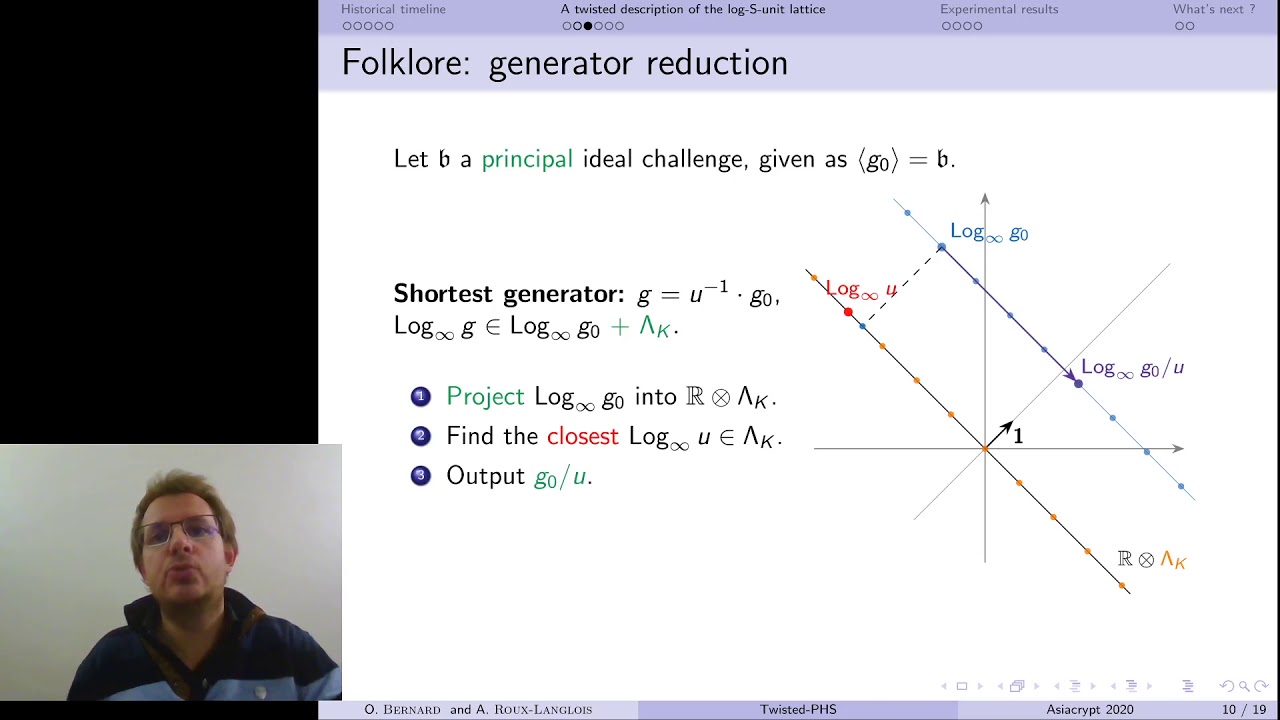Welcome to the resource topic for 2020/1081
Title:
Twisted-PHS: Using the Product Formula to Solve Approx-SVP in Ideal Lattices
Authors: Olivier Bernard, Adeline Roux-Langlois
Abstract:Approx-SVP is a well-known hard problem on lattices, which asks to find short vectors on a given lattice, but its variant restricted to ideal lattices (which correspond to ideals of the ring of integers \mathcal{O}_{K} of a number field K) is still not fully understood. For a long time, the best known algorithm to solve this problem on ideal lattices was the same as for arbitrary lattice. But recently, a series of works tends to show that solving this problem could be easier in ideal lattices than in arbitrary ones, in particular in the quantum setting. Our main contribution is to propose a new ``twisted’’ version of the PHS (by Pellet-Mary, Hanrot and Stehlé 2019) algorithm, that we call Twisted-PHS. As a minor contribution, we also propose several improvements of the PHS algorithm. On the theoretical side, we prove that our Twisted-PHS algorithm reaches the same asymptotic trade-off between runtime and approximation factor as the original PHS algorithm. On the practical side though, we provide a full implementation of our algorithm which suggests that much better approximation factors are achieved, and that the given lattice bases are a lot more orthogonal than the ones used in PHS. This is the first time to our knowledge that this type of algorithm is completely implemented and tested for fields of degrees up to 60.
ePrint: https://eprint.iacr.org/2020/1081
Talk: https://www.youtube.com/watch?v=4ofqdWKLAQw
Slides: https://iacr.org/submit/files/slides/2020/asiacrypt/ac2020/379/slides.pdf
See all topics related to this paper.
Feel free to post resources that are related to this paper below.
Example resources include: implementations, explanation materials, talks, slides, links to previous discussions on other websites.
For more information, see the rules for Resource Topics .
